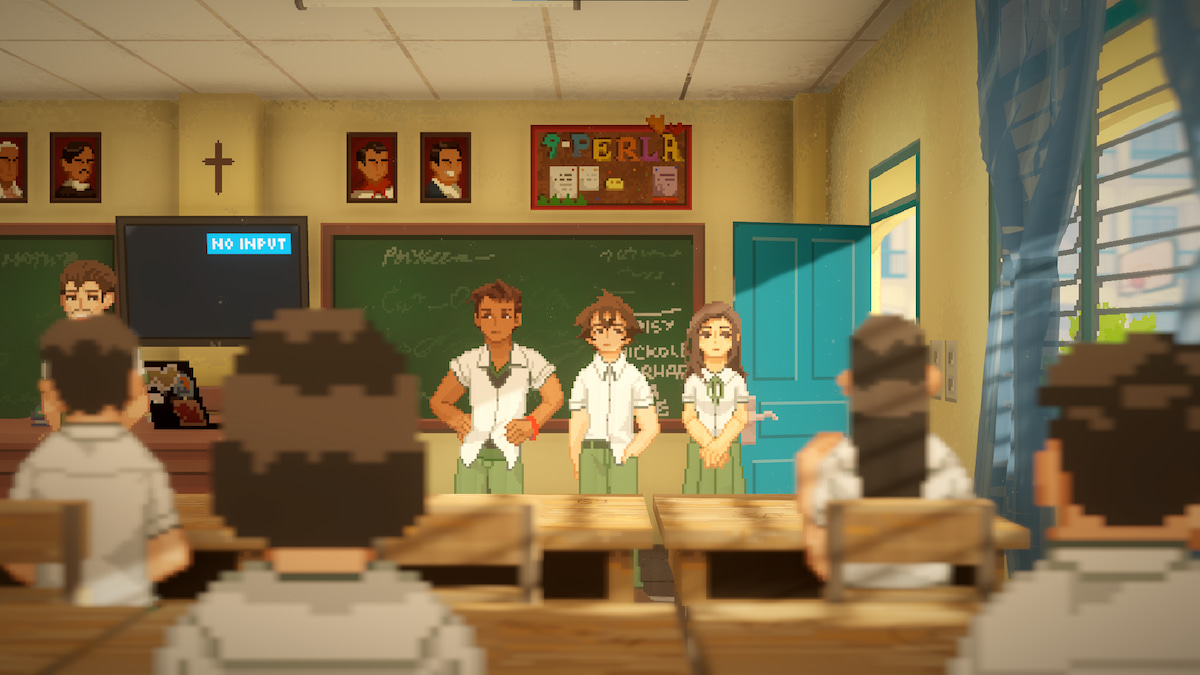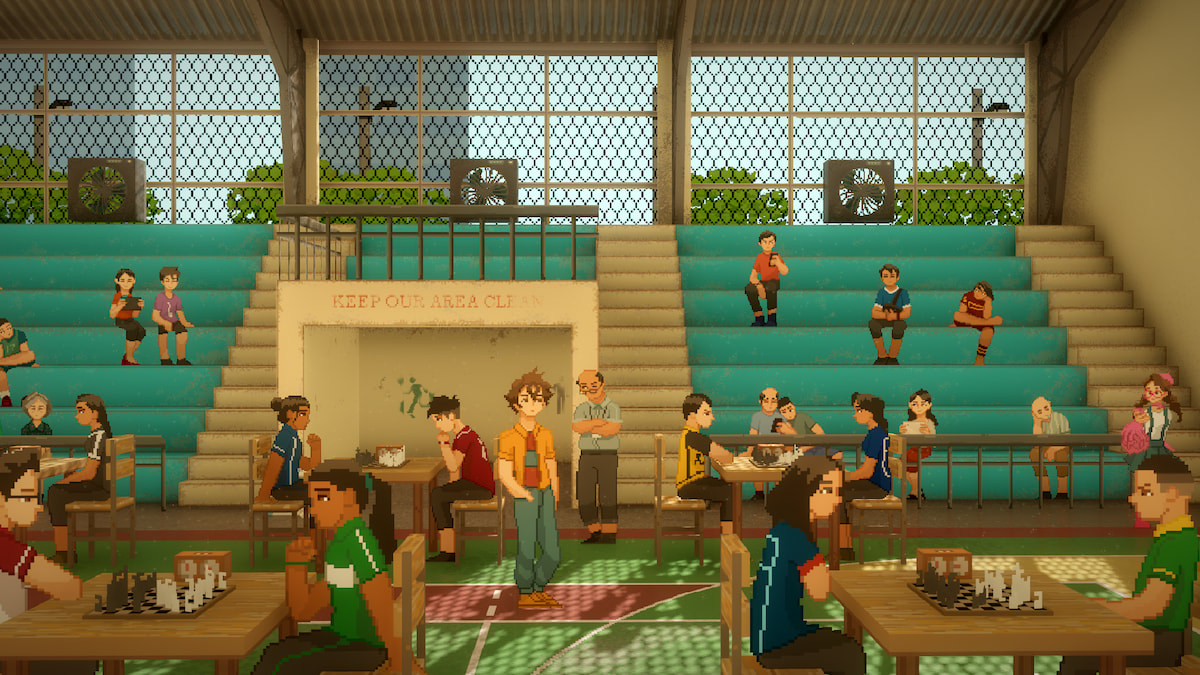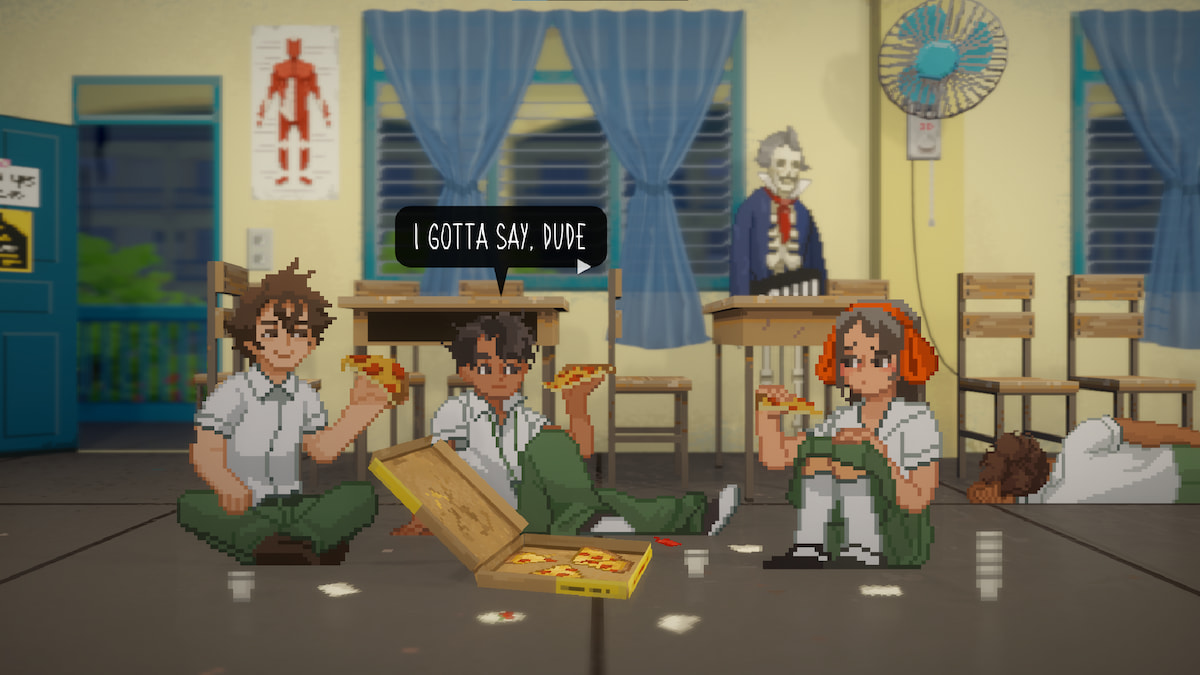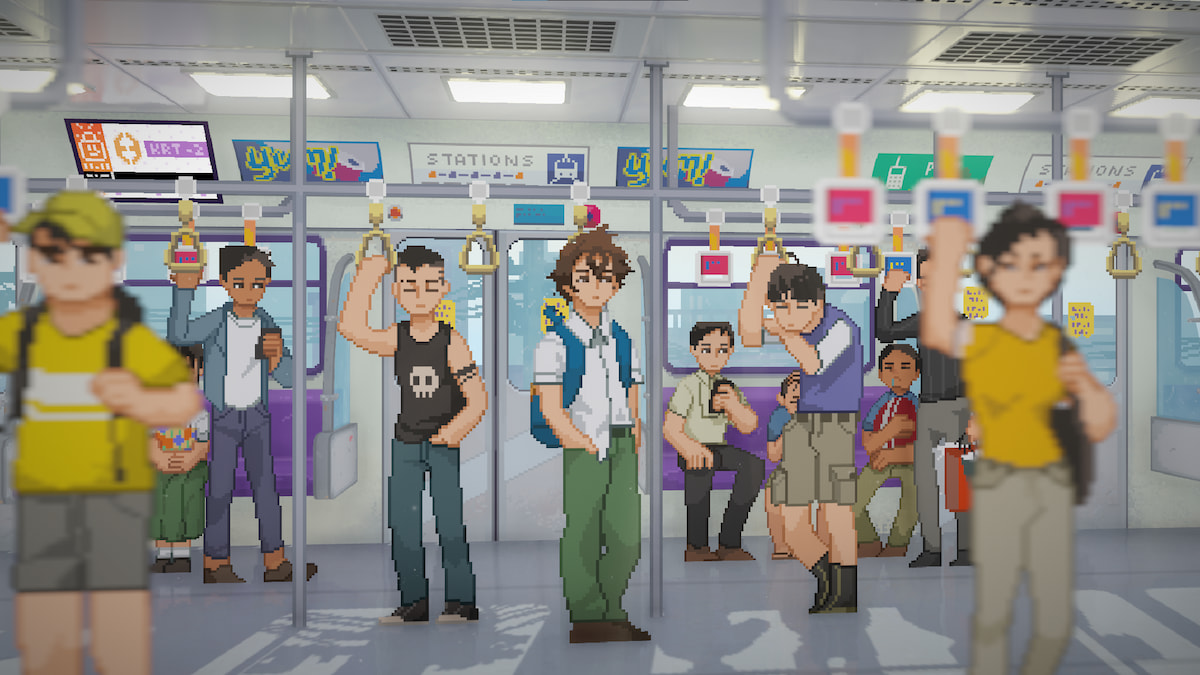Christmastime 2014. Fifteen-year-old Mark stares at his phone as he rides the train to school, trying to avoid thinking about the assignment he forgot to do. He scrolls through Facebook, hitting like on his friends’ pictures and comments left by well-meaning relatives. He skims over news articles discussing natural disasters, famine, and politics. He gets the rundown on the book he was supposed to read for class from a friend.
These are the opening minutes of Until Then, and they tell you practically everything you need to know about this narrative adventure from Philippines-based Polychroma Games. You will spend your time engaging in a beautifully realized world filled with culture, dynamic characters, and something deeply troubling sitting just beneath the surface. It’s just that you’re going to engage with these things through the eyes of a teenage boy who would much rather be sleeping in or playing video games.
Magic in the Mundane

Mechanically, Until Then carries clear influence from games like Night in the Woods. Your primary interaction with the game involves wandering from place to place, having conversations with a likable cast of characters, and performing little moments of interactivity here and there. In fact, the minigames scattered throughout Until Then are extremely reminiscent of that earlier game. What Until Then does to separate itself is to lean into the mundane with an even greater sense of detail and specificity.
The first moment of interactivity comes before the game even begins. As you hit Start in the main menu, an alarm sounds. The menu fades away, but the Start button remains. You hit it again, and the alarm sounds again. As the menu seamlessly shifts into the game, your first job is to wake up Mark, very much against his will. From that point you will help him button up his shirt, buy a train ticket, and reply to some texts. There is no activity so small that Until Then won’t build a moment of interactivity around it.
These mundane minigames are where Until Then’s true magic lies. They effortlessly pull you into the game’s world and lend even its most stylized aspects a tangible sense of weight. They’re rarely particularly deep or complex, but they give breathing room to those tiny, intimate moments of adolescence like ordering lunch, fudging your way through a book report you forgot to finish, and finally getting the chance to text the girl you (and everyone else) likes.
Style and Substance
Until Then’s visual style went a long way to capturing attention in previews, and with good reason. The beautiful pixel art lends a gentle nostalgia to every scene. The color palate is especially gorgeous, blended with the lighting effects to make every scene feel palpably alive. When Mark is stuck in class, you can practically feel the oppressive heat on the back of his neck through the windows.
The pixel art also allows Until Then to feature some of the most expressive animations in a narrative game of this type in a long time. Games like Night in the Woods and Oxenfree rely more on character design and expressive posing to communicate themselves visually. Until Then, on the other hand, is filled with gorgeous and shockingly detailed animation, from Mark’s perfectly lazy walk cycle to someone throwing their arms around a dear friend at a moment of crisis.
If you’ve played a lot of narrative games Until Then might not seem like it’s doing much to surprise you. However, there is more to Until Then than a first impression might suggest. If you look closely, it’s clear from the start that something strange is going on. Characters make constant reference to injuries and illnesses that seem to be resulting from earthquakes and hurricanes. News items on Mark’s phone talk of disasters, political turmoil, and something known simply as “The Ruling.” Soon, Mark starts to feel a creeping sense of deja vu, made even stranger by the fact that he’s not the only one who seems to be experiencing it.
Until Then’s plot unravels slowly enough that it feels wrong to spoil any of the major surprises, but with each new turn, the simple act of living day to day through the game’s various minigames and the infectious beauty of the pixel art style starts to feel more and more fragile.
A Many-layered Protagonist

At first glance, Mark seems like a sleepy, blank-slate protagonist. The kind of anime-inspired main character designed for young men to easily project themselves onto. But, as the game progresses, it becomes clear that Mark is a kid at the cusp of a real transitional period in his life. As you play, everything in Until Then feels as though it’s on the edge. Mark is only a few failed tests away from expulsion. The outside world is on the brink of falling into total chaos.
Mark and his friends exist in that space between childhood and adulthood, where it feels like a single step would be enough to send you into an entirely new world. Some are embracing change; some are rejecting it. And in the middle is Mark, seemingly unable to do anything at all but play video games and sleep in late. This is a tricky position for a character since, without a motivation for why Mark is doing the things he’s doing, it’s difficult for a player to find any motivation of their own.
In the game’s second chapter, Polychroma Games starts to reveal what it’s really doing with Until Then. Mark lives alone, his father working somewhere far away, and his mother seemingly just… absent. Mark wanders the house, trying to find anything to occupy his time. He tries to watch terrible local TV. He tries to play some of the unplayed games in his library. Nothing works. In the end, he finds himself chatting, unsuccessfully, to strangers on his phone. It’s an all too real moment in the lives of many adolescents. Mark is reaching out into the world for some kind of connection that he simply cannot find. It’s at this moment that Mark comes into sharp focus. He’s not just a blank slate. He’s a young boy left alone in a world that he is struggling to understand, let alone find his place in. You and Mark may sometimes wander directionless from scene to scene, but it’s because Mark has no one to give him direction.
This approach to character and story also results in a pacing that tends to drag from time to time. The plot takes a long time to wind up, and while the delightful character interactions help, they can’t carry the weight of the narrative all on their own. It’s fortunate that when the story starts to cook, it really cooks.
A Lovable Cast of Characters

It’s no surprise that Until Then is most exciting when Mark connects with the people around him. These moments give way to mechanical standouts like skewering fish balls in oil or playing games at the fair. But they also offer some of the most charming and dynamic narrative moments, like when Mark and his classmate attempt to speedrun an essay on Crime and Punishment or when Mark and a new crush/frenemy sit down to paint together. Until Then is never more drab in its design than when Mark is alone, and it’s hard not to feel as though that’s intentional.
The characters are written the way they’re animated — broadly and not exactly naturally, but with so much charisma and charm that they’re all too easy to connect with. They speak with an easy familiarity, even reference shared in-jokes that the player might not be privy to. From Louise, the seemingly perfect class president, to Cathy, the endlessly lovestruck ball of energy who is clearly carrying a weight she doesn’t want anyone to see, all of them have more going on beneath the surface than their teenage affections might first suggest.
Sadly, the dialogue itself can be a little stilted at times. This is likely a result of the localization and is rarely enough of an issue to detract from the charisma of the game’s script as a whole.
Until Then — The Bottom Line
Pros
- Beautiful pixel art style
- Charming cast of characters
- Deeply emotional story
- Gameplay that celebrates the mundane
Cons
- Slow pacing
- Occasional clumsy dialogue
- Doesn’t do much that’s new
If you love narrative adventures, coming-of-age stories, or you simply have a special place in your heart for the complexities of adolescence, Until Then is a game absolutely worth playing. While it might not be the most innovative game of 2024, it’s still one of the most narratively compelling, visually striking, and heart-achingly true to life. Even as the world of Until Then twists and breaks down, it never loses sight of the real, human core of its story or the characters that make its world so worth visiting.
Gameplay tested on PC. Code provided by Polychroma Games.







Published: Jun 25, 2024 7:01 PM UTC